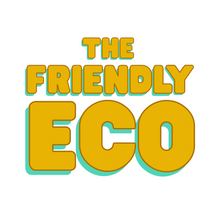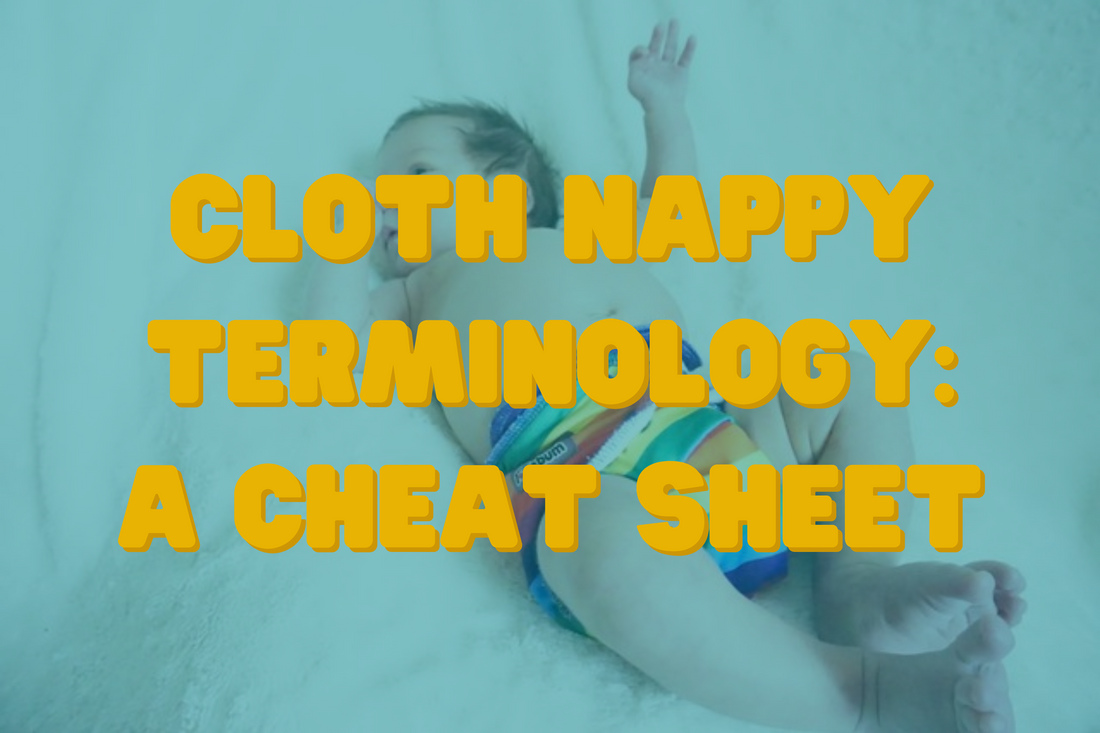When you first discover the world of cloth nappies it can often feel like a big minefield of complicated abbreviations and terminology, this can make cloth nappies seem impossible before you've even begun. But fear not! You can treat this post as your own personal code-breaker in the world of cloth nappies. Print it out, bookmark it or send it to your partner - it's up to you!
First thing's first - you don't actually 'need' to be an expert in the lingo to successfully use cloth, although it can help when buying nappies or troubleshooting issues. All you really need is the understanding that a basic cloth nappy consists of two parts - an absorbent inner and a water resistant outer, and a can-do attitude!
We've split the terms into categories for ease, so lets get started...
Nappy Types:
BTP - Birth To Potty. This is the most common nappy size, fitting (you guessed it) from 'birth' until potty training. In reality, these nappies fit best from around 10-12lbs, so keep this in mind if your baby is only a skinny 7lbs at birth.
OS - One Size. Just another name for Birth To Potty nappies.
Sized - There are some sized nappies out there - primarily 'fitted' nappies. These are usually Size 1 (roughly 8-20lbs), Size 2 (roughly 18-35lbs), and Size 3 (35lbs+). Most babies are potty trained by the end of Size 2.
Fitted - A fitted nappy is an absorbent terry nappy often used at night, it is nappy shaped and is often fastened with velcro tabs. It requires a wrap over the top.
Flat - This is a general term used for all nappies which need folding such as traditional terry towels, muslins and pre-folds. Requires a wrap.
Terry - AKA the traditional terry towel (but no boiling needed!!) Requires a wrap.
Pre-Fold/Tri-Fold - A flat rectangular nappy which is folded into thirds to provide an absorbent pad, this can be placed in a wrap or used to boost absorbency in any nappy. As it folds out it can be very quick to dry. Requires a wrap.
AIO - All In One. A nappy which has everything you need already sewn in. This includes the absorbent inner and water resistant outer. These can be slower drying due to their thickness but very useful for inexperienced family members to use.
AI2 - All In Two. A nappy where the inner absorbent layer and outer water resistant layer are separate. You can often replace the inner a few times before washing the outer.
Pocket - A nappy consisting of a water resistant outer shell with a 'pocket' to stuff absorbent inserts into. Perhaps the most common of modern nappies.
Wrap - A water resistant outer cover which goes over absorbent nappies. Usually made of PUL or Wool.
Wool Pants/Soakers - The traditional wrap before PUL, still used today (mainly for night nappies) due to it's effectiveness. This must be 'lanolised' on occasion to keep it's waterproofing.
Rise - BTP nappies have front poppers which make their height/length (rise) adjustable to suit most sizes of baby. By adjusting the rise, you can get the correct fit for your little one. Don't expect to be on the biggest rise (all poppers undone) until your toddler is practically potty trained.
Insert - The absorbent inners used in pocket nappies, these are a rectangular pad shape. Often used interchangeably with booster nowadays.
Booster - An absorbent pad used to 'boost' nappy absorbency. Often used interchangeably with insert nowadays.
Soaker - Essentially an insert/booster, brands just enjoy coming up with their own unique names to confuse newbies!
Liner - A non-absorbent layer of material used as a barrier between baby's skin and the nappy. Often made of fleece, this keeps baby feeling dry and also prevents staining. Can be disposable or reusable.
Nippa/Snappi - A modern nappy fastener used instead of sharp nappy pins. Only needed for flat nappies and a handful of fitted nappies.
Wet Bag - A PUL lined water resistant bag used for storing dirty nappies in whilst out and about, some like to use them at home too. Surprisingly fantastic at keeping the smells in!
Nappy Bucket - Also called a pail, used for storing dirty nappies in at home until wash time.
Vest Extenders - A handy little piece of fabric which poppers onto your baby's vest to extend the length (and use) of the vest! Often high street clothes aren't cut for cloth bums so these can be a lifesaver to ensure value for money.
Lanolin - A waterproof wax which originates from sheep's wool, it is used to 'lanolise' (coat) wool wraps and make them waterproof. Not vegan obviously.
Materials:
PUL - Polyurethane Laminate. A water resistant material consisting of a layer of fabric and a layer of TPU, heat or chemically bonded together. Used to make wraps, outer shells and wet bags.
TPU - Thermoplastic polyurethane. The waterproof coating which is bonded to fabric to make PUL.
Microfiber (MF) - A quick-drying, man-made material used to make the absorbent part of some nappies, boosters, inserts etc. It's fast to suck up moisture but doesn't hold a huge amount so can be prone to compression leaks if used exclusively.
Cotton - A good all-round material used to make the absorbent part of some nappies, boosters, inserts etc. It has an average drying time and an average level of absorbency.
Bamboo - A highly absorbent material used to make the absorbent part of some nappies, boosters, inserts etc. It can be slower to dry and sometimes to absorb moisture, but a great 'water holding tank' for a cloth nappy.
Charcoal - A highly absorbent and antibacterial material used to make the absorbent part of some nappies, boosters, inserts etc. Often mixed with another material such as cotton, bamboo or microfiber. Their drying time can vary depending on the material they have been combined with.
Hemp - A thin but thirsty material used to make the absorbent part of some nappies, boosters, inserts etc. Quick drying, fast absorbing and very thirsty, this material does come with a slightly higher price tag due to supply and demand.
Buying/Selling Preloved:
EUC - Excellent Used Condition. A practically new nappy, no real signs of use and most likely used only a handful of times.
VGUC - Very Good Used Condition. A nappy with often one/two minor cosmetic faults which don't affect use. Perhaps a bit of bobbling to the lining or a bit of lint in the velcro, maybe some very light stains which can be sunned out.
GUC - Good Used Condition. A nappy with one/two slightly bigger flaws but still totally useable. Perhaps slightly slacker elastics, a stain, velcro or lining bobbling, fading to print.
UC - Used Condition. Generally a nappy on it's last legs, usually given away for free. Expect staining, bald patches on nappies, possible cracks in PUL, not-so-sticky velcro, slack elastics etc. Can sometimes be done up if handy with a sewing machine but if the PUL is failing there isn't much to be done but recycle/re-purpose.
ISO - In Search Of.
DISO - *Desperately* In Search Of.
HTF - Hard To Find. Referring to a nappy print which has been discontinued but highly sought after, these can go for extortionate amounts. Just remember - is it really worth paying that much for a poop vessel?
Suds - The bubbles created from your laundry detergent. Absolutely fine and needed mid wash for cleaning, but you don't want lots of these soap foamy bubbles after rinsing! If you still have suds, rinse rinse rinse and reconsider your powder dosage.
Agitation Bubbles - Larger and fewer, these bubbles occur naturally due to the water agitation and are expected in the final rinse cycle. They pop fairly quickly and don't have a white foamy appearance like suds. Don't worry, these are normal!
Over/Under Loaded - Correct loading is the key to a good wash - you want the drum to be 2/3 to 3/4 full when wet, this means you're able to stick your hands in above the nappies and do jazz hands but not a whole acrobatic stunt! Overloading means the nappies won't be able to move around for good cleaning, under-loading means too much detergent and not enough items in the drum for proper agitation.
Hard/Soft Water - Water hardness plays a huge part in nappy (and any) washing. Hard water requires much more detergent than soft water to balance out the minerals and give the nappies a good clean. You'll find that everyone had their own opinion on half/double doses of powder, but in actual fact it is entirely dependent on your water hardness as to which will work for you. Have a read of our wash guide if unsure, and be sure to read the dosage chart on your box of powder.

